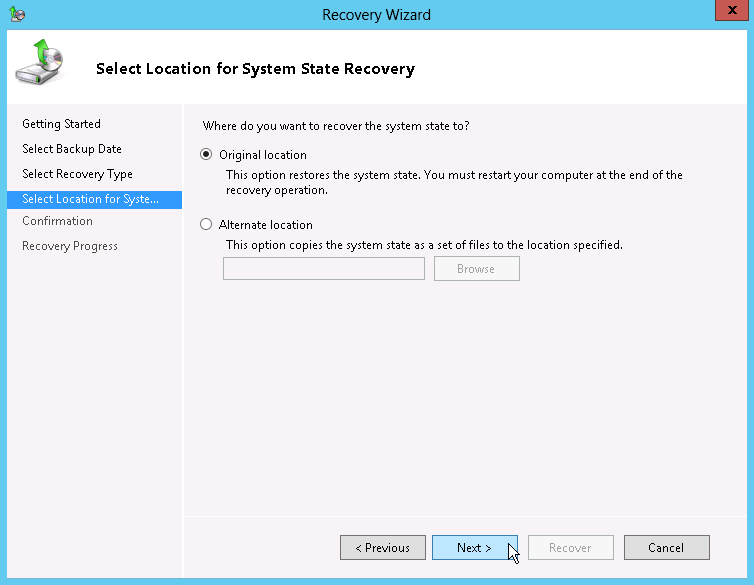Sidebar
This is an old revision of the document!
Table of Contents
Restore System State Data to Windows Server 2008 and Newer Releases
1). Restore System State Backup Data
1. Click the Restore icon on the main interface of Cloudbacko Pro.

2. Select the backup set that you would like to restore the system state data from.
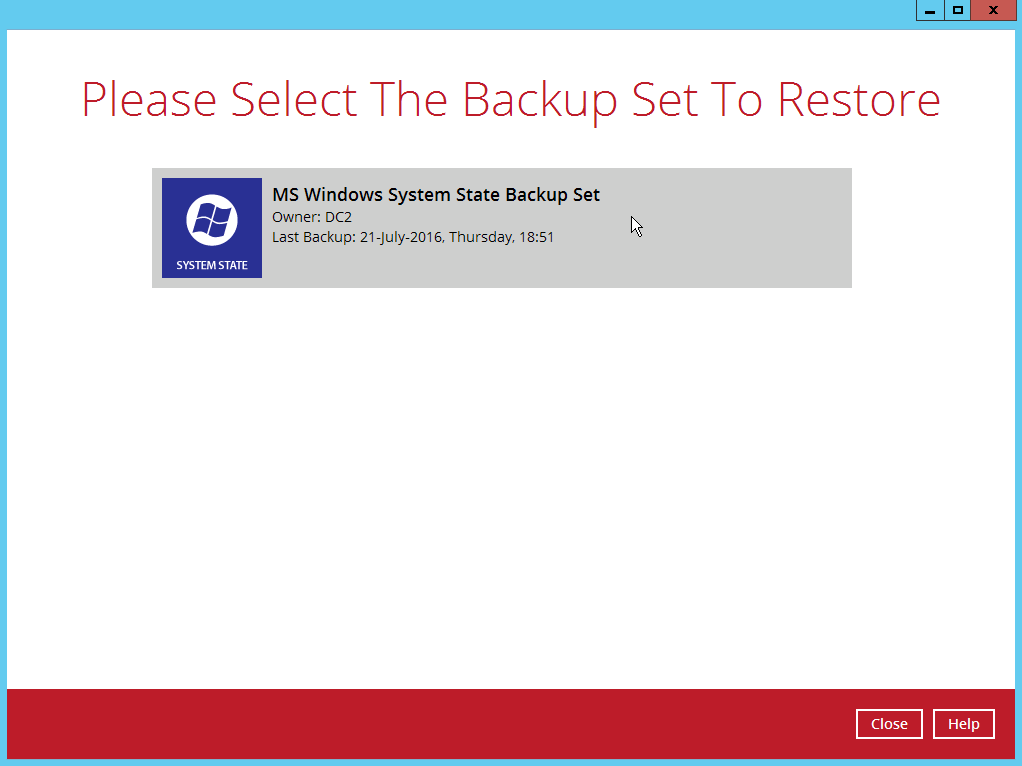
3. Select the backup destination that contains the system state data that you would like to restore.
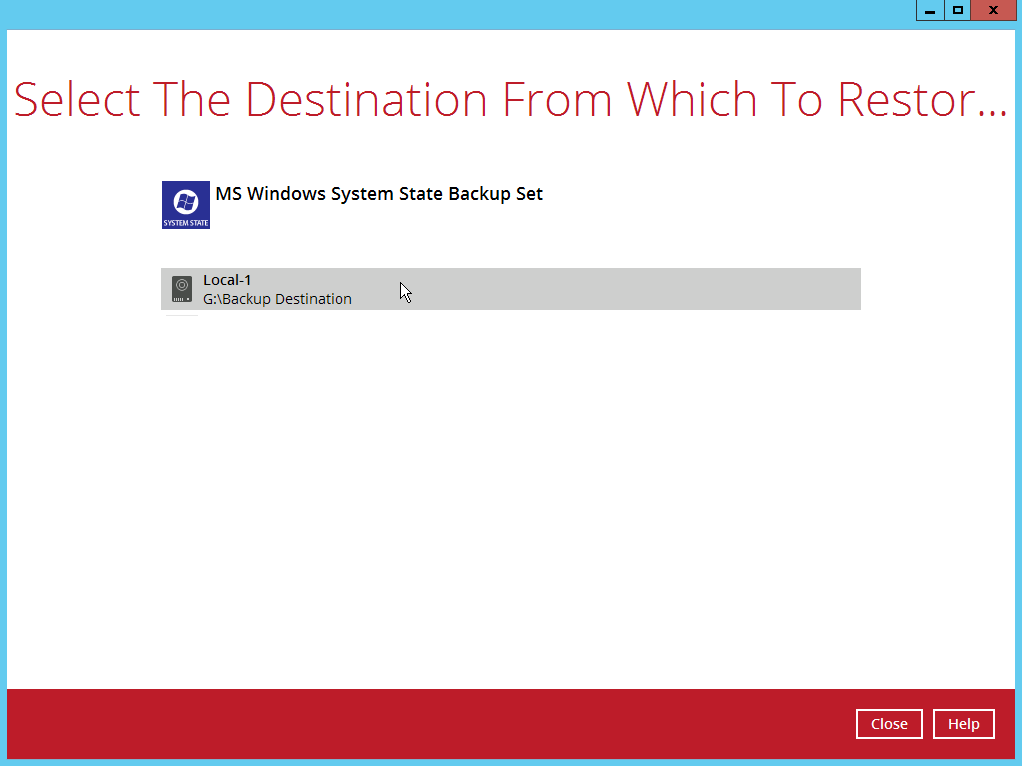
4. Select to restore from a specific backup job, or the latest job available from the Select what to restore drop down menu. Click Next to proceed.
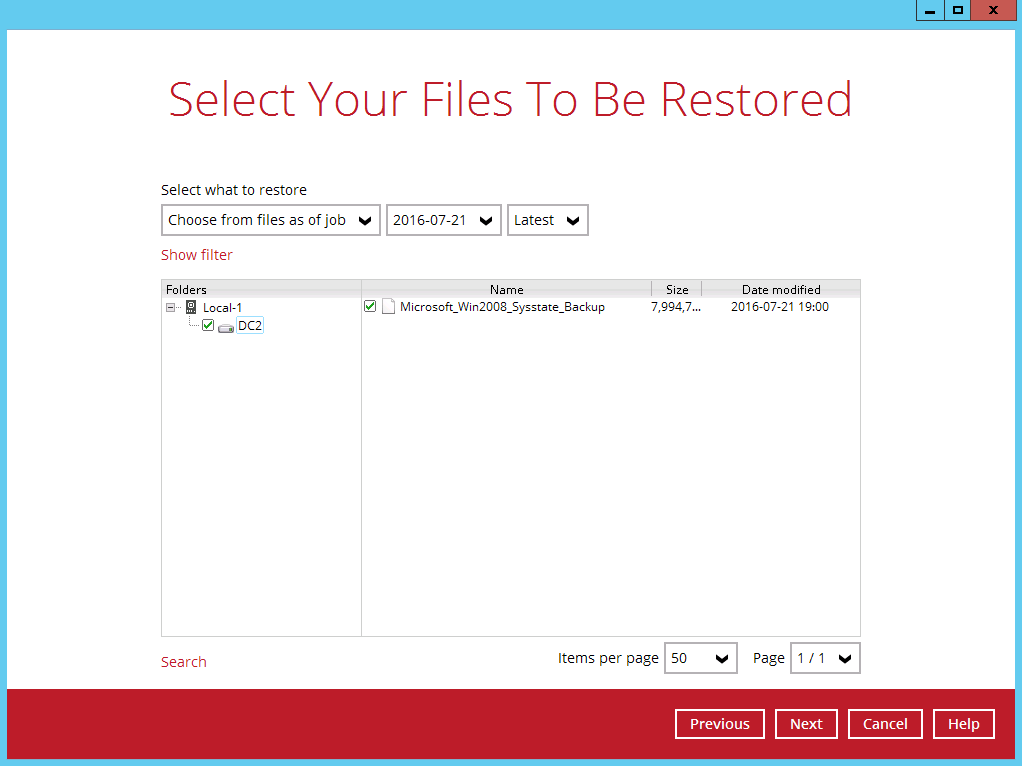
5. Select to restore the system state data to a local volume or to a removable drive.
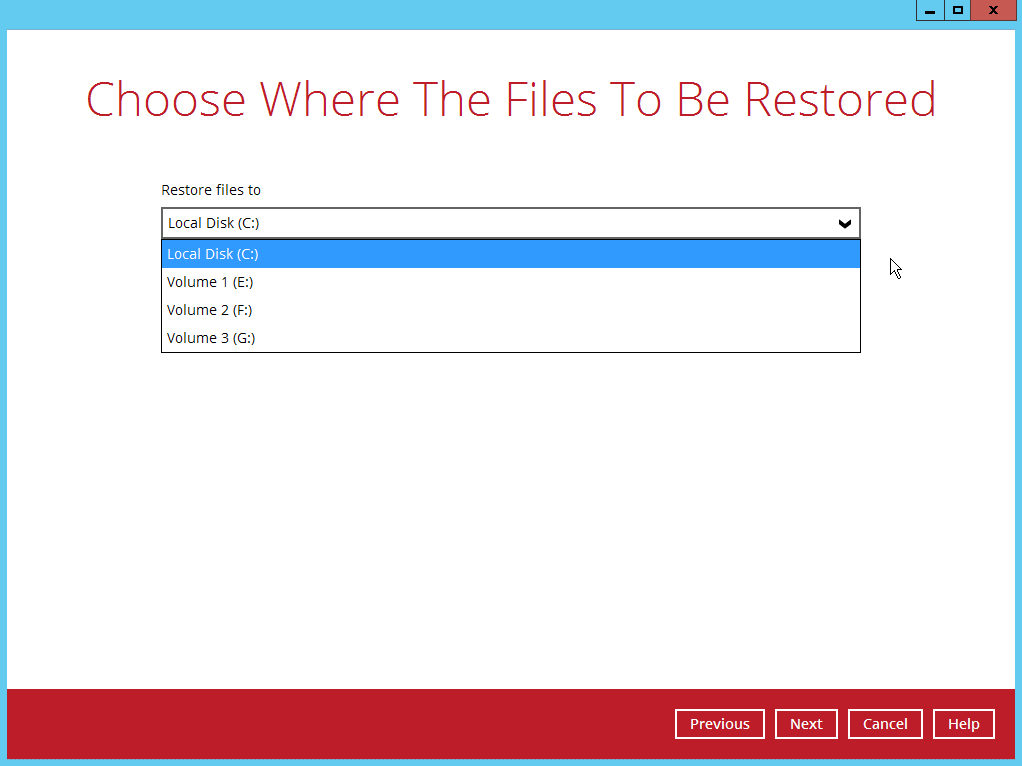
6. Click Next to proceed.
7. Select the temporary directory for storing temporary files.
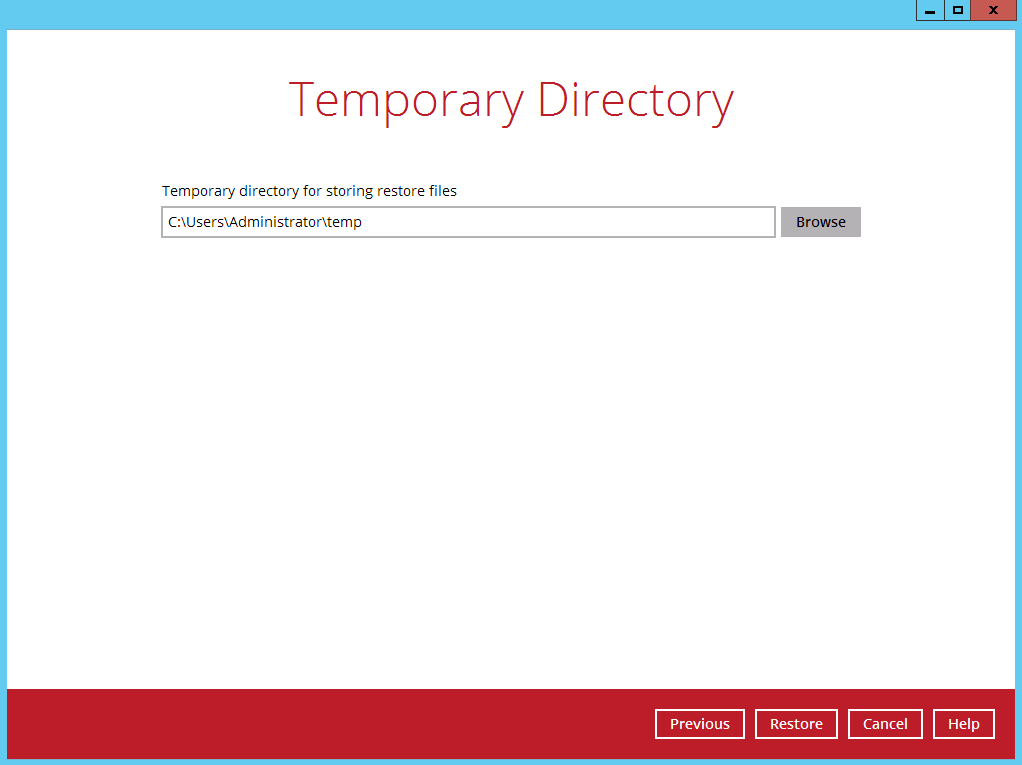
8. Click Restore to start the restoration.
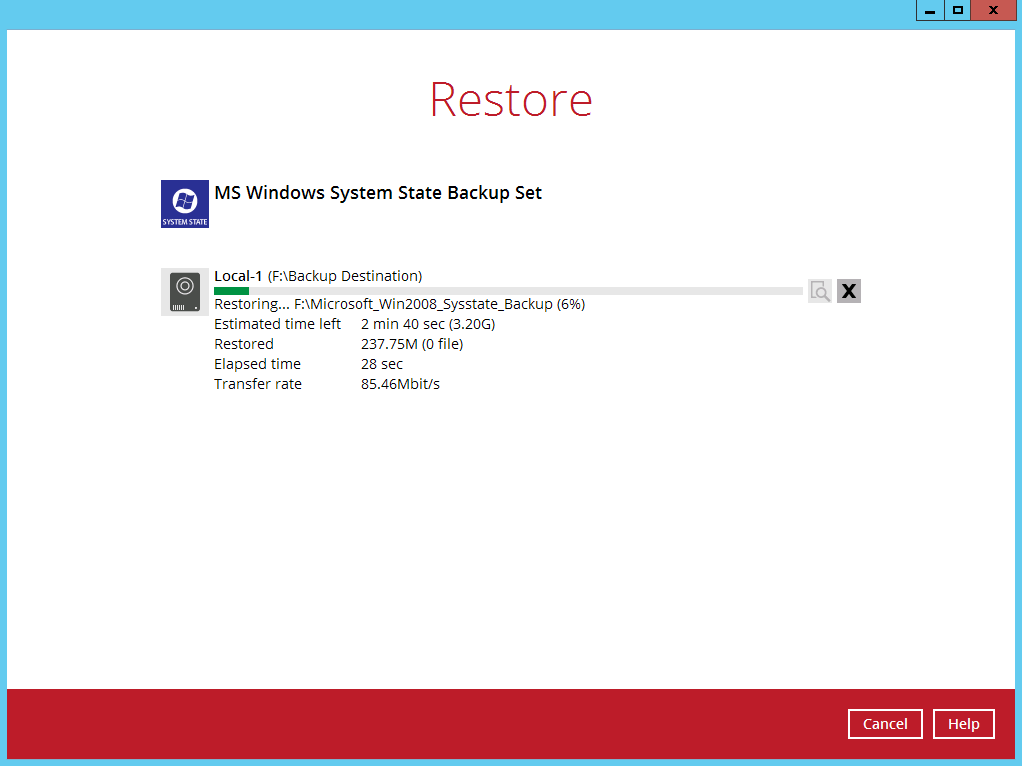
9. The following screen is displayed when the system state data are restored successfully.
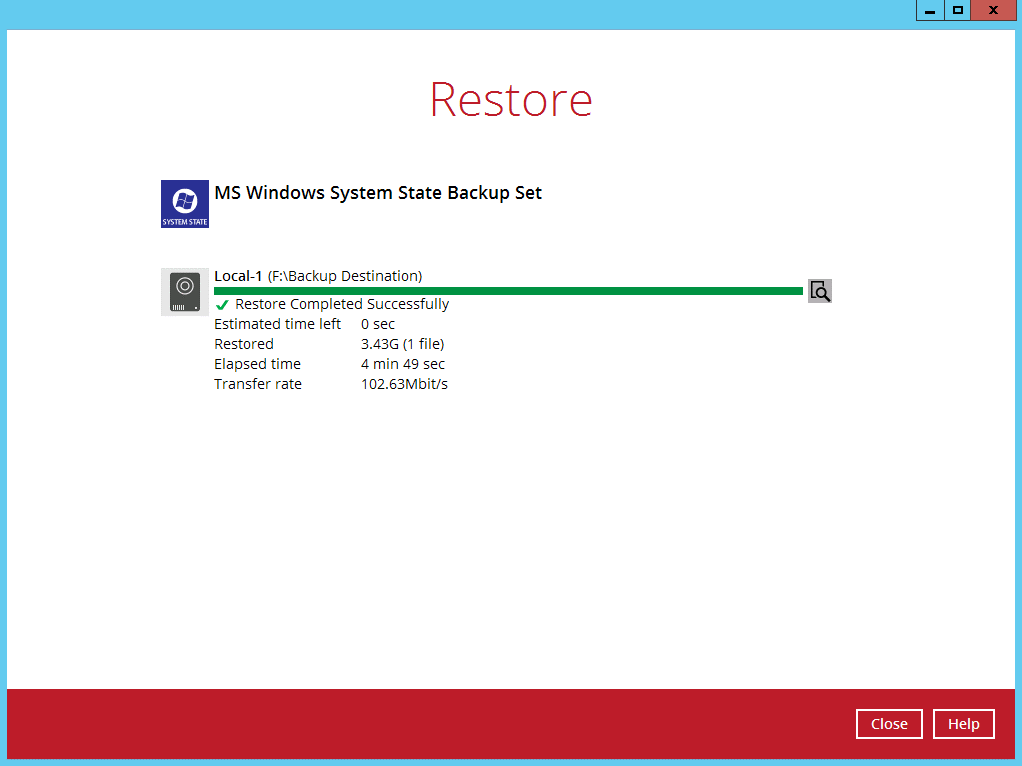
10. The restored system state data are stored in the WindowsImageBackup folder in the restore location.
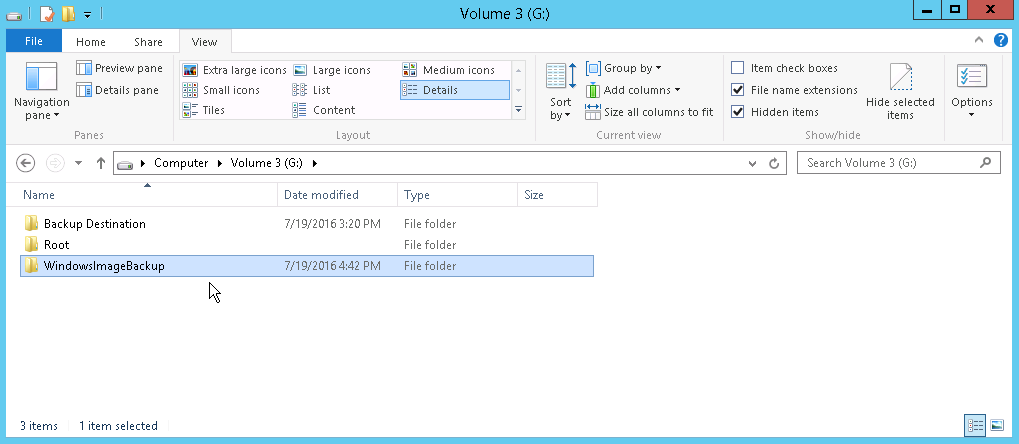
In addition to the system state data, the WindowsImageBackup folder includes catalog files that contain information about all backups in there up to the current backup, and MediaId, that contains the identifier for the backup storage location.
This information is required to perform a recovery. Do not alter the directory structure or delete any file / folder within the WindowsImageBackup folder.
11. Copy the WindowsImageBackup folder and its content to the server that you want to perform the restore for, or to a network drive that is accessible to the server. The folder must be copied to the root level of a volume (e.g. top-most level), unless you are copying the folder to a network drive.
12. Continue to the next section of the guide.
2). Apply the System State Data
Before you begin, make sure that the system state data restored with Cloudbacko Pro are copied to a local disk (where you will perform the restore), or in a remote shared folder. For Windows Server 2008 R2 or later, you can use the Recovery Wizard in Windows Server Backup or wbadmin command to recover the system state.
- For Windows Server 2008, you can only use the wbadmin command to recover the system state.
- For instructions specific to recovering Active Directory Domain Services, see http://go.microsoft.com/fwlink/?LinkId=143754
- Note: Refer to the following page for syntax of the wbadmin command: http://go.microsoft.com/fwlink/?LinkId=140216
To determine what can be recovered from your restored system state data, enter the following command in an elevated command prompt:
wbadmin get versions
[-backupTarget:{<BackupTargetLocation> | <NetworkSharePath>}]
Example (system state restored to G: volume):
C:\Users\Administrator>wbadmin get versions -backupTarget:g:
wbadmin 1.0 - Backup command-line tool
(C) Copyright 2012 Microsoft Corporation. All rights reserved.
Backup time: 7/19/2016 1:46 PM
Backup target: 1394/USB Disk labeled Volume 3(G:)
Version identifier: 07/19/2016-05:46
Can recover: Volume(s), File(s), Application(s), Bare Metal Recovery, System State
Snapshot ID: {feb9079c-9459-4034-908f-7b5a9b0bb1e5}
File and folder recovery is not possible from a system state backup performed on Windows Server 2008.
To recover the system state using the Windows Server Backup user interface.
1. Open Windows Server Backup from Administrative Tools or Server Manager.
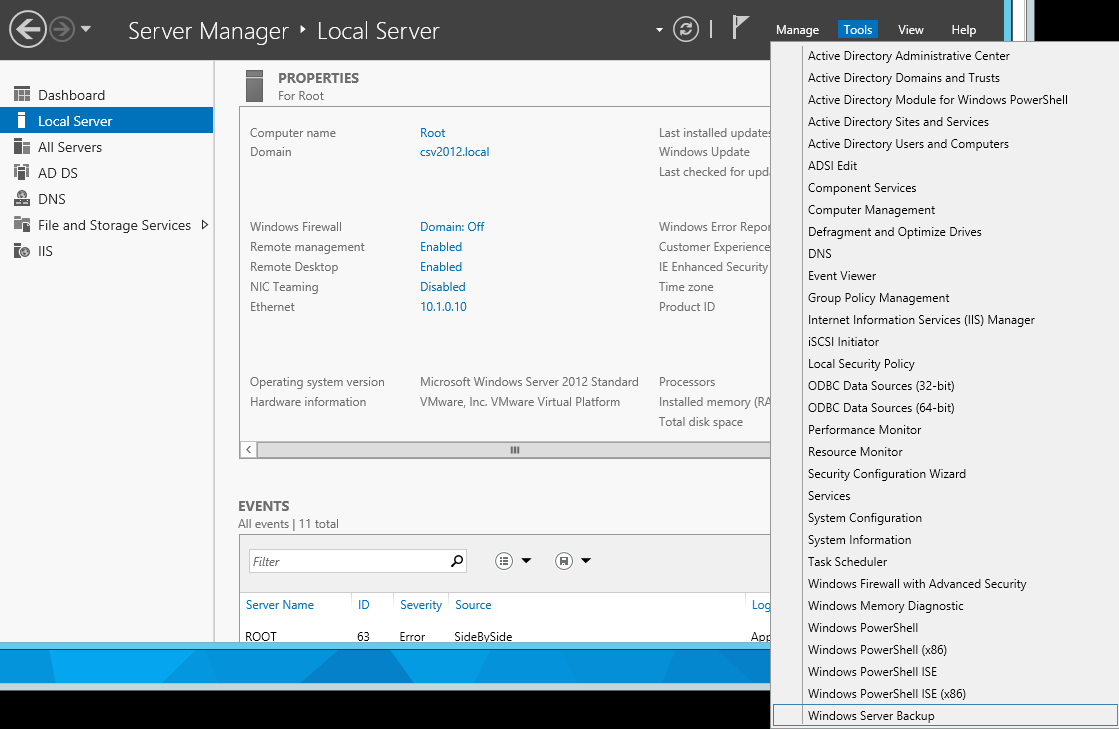
2. In the Actions panel under Windows Server Backup, click Recover…
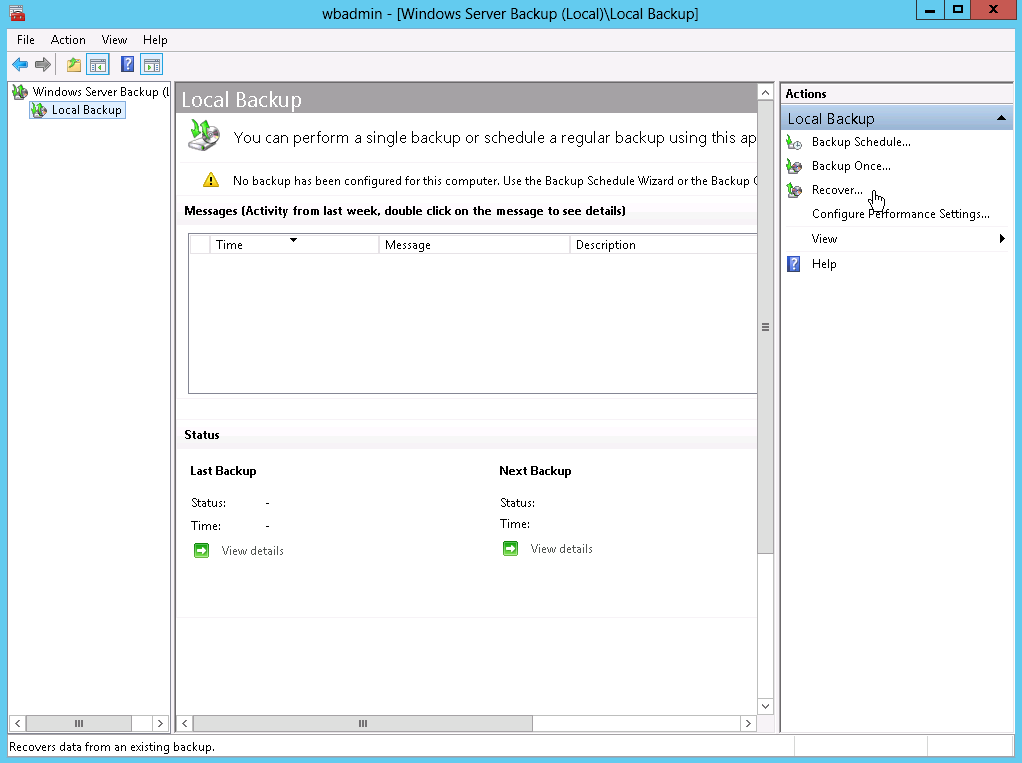
3. On the Getting Started page, select A backup stored on another location, then click Next.
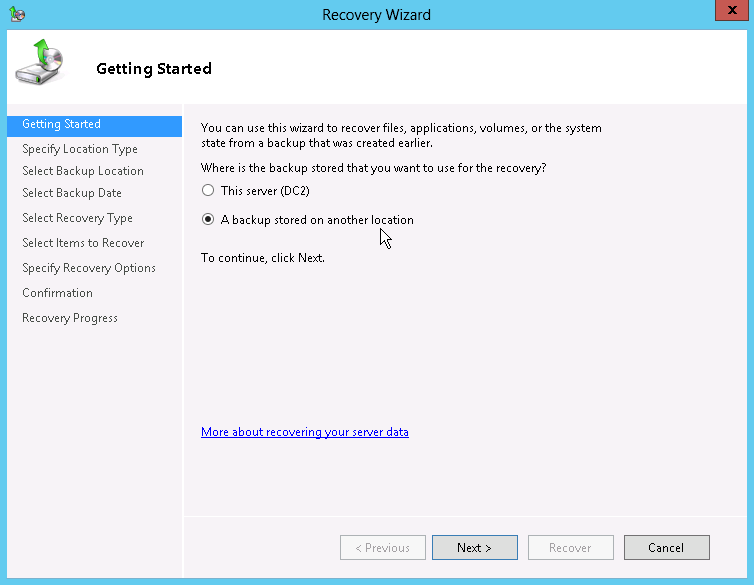
4. On the Specify Location Type page, select
5. Click Local drives, if the system state data were copied to a local volume on the server.
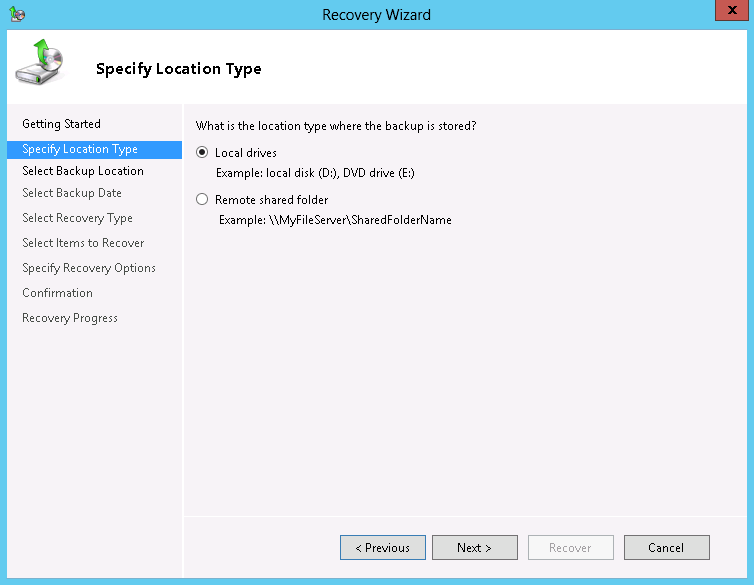
6. Click Remote shared folder, if the system state data were copied to a network path accessible to this server.
7. On the Select Backup Location page, select the volume that contains the system state data.
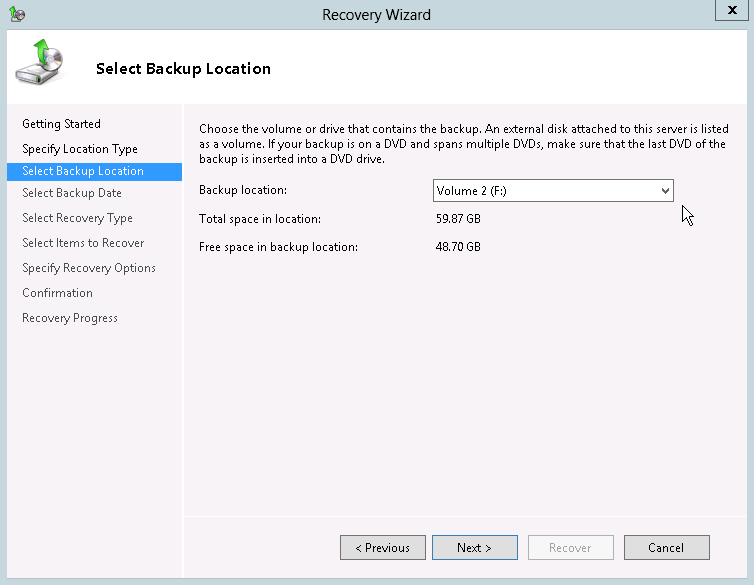
Assuming that the WindowsImageBackup folder was copied to the following:
F:\ WindowsImageBackup
8. On the Select Server page, select the server whose data you want to recover.
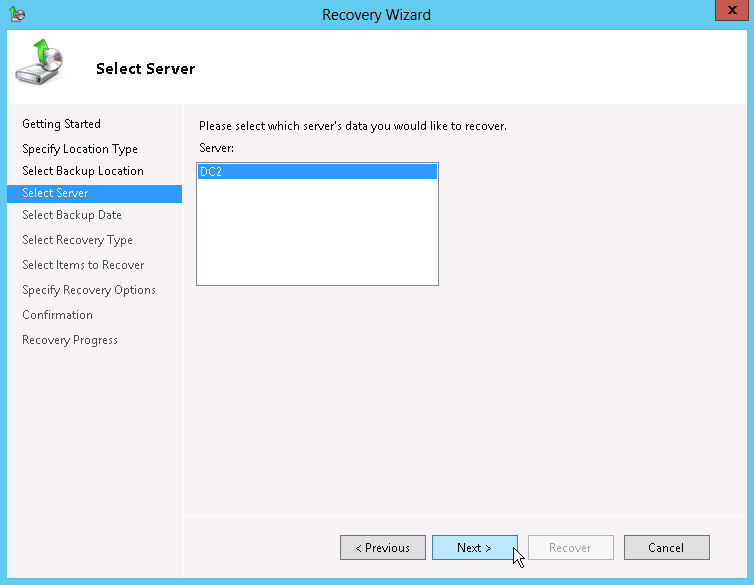
9. On the Select Backup Date page, select the point in time of the backup you want to restore from.
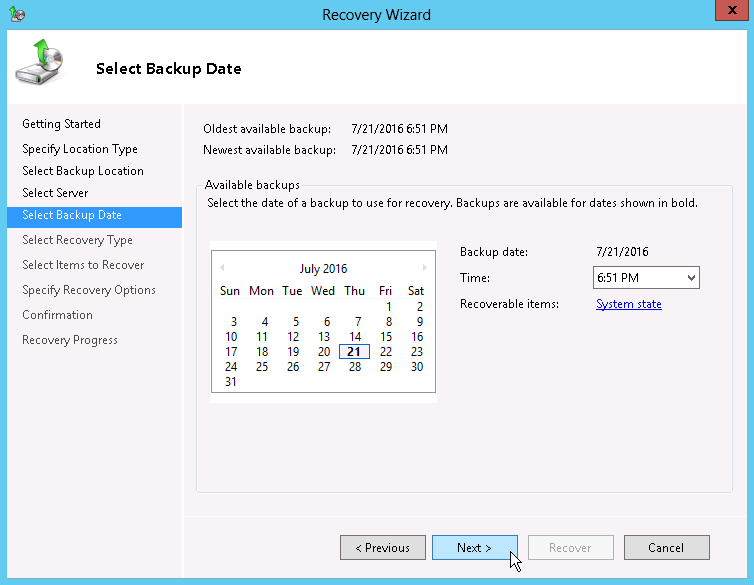
10. On the Select Recovery Type page, click System state.
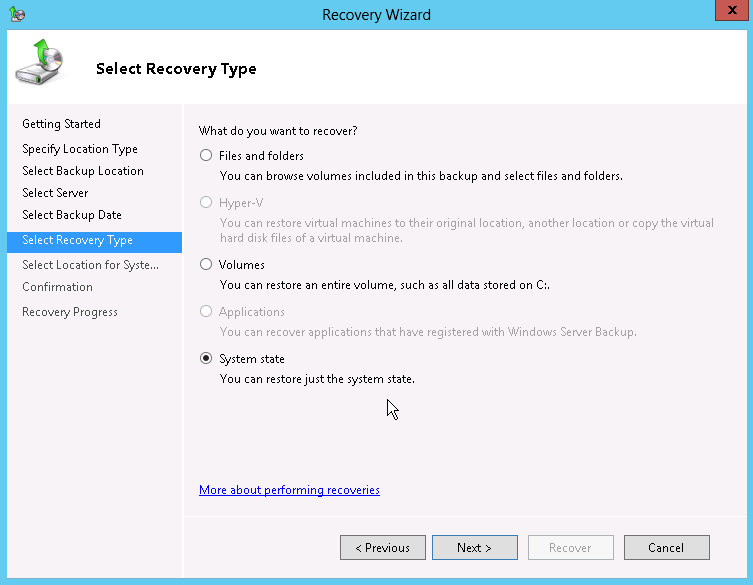
11. On the Select Location for System State Recovery page, select:
- Original location - to restore the system state to the same physical computer from which the system state backup was created
Or
The options displayed are different for system state containing Active Directory Domain Services.
12. You will also need to start the server in Directory Services Restore Mode (DSRM) to restore system state data containing Active Directory Domain Services.
19. For instructions specific to recovering system state to Active Directory server, see http://go.microsoft.com/fwlink/?LinkId=143754
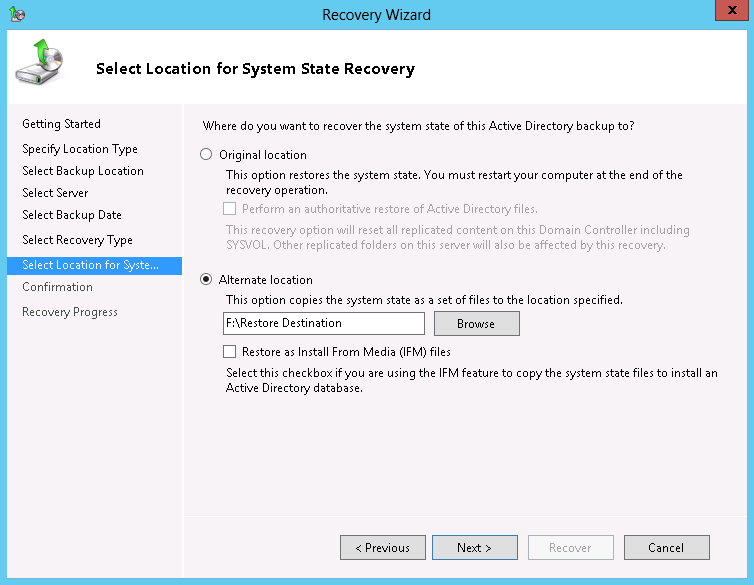
20. On the Confirmation page, review the details, and then click Recover to restore the specified items.
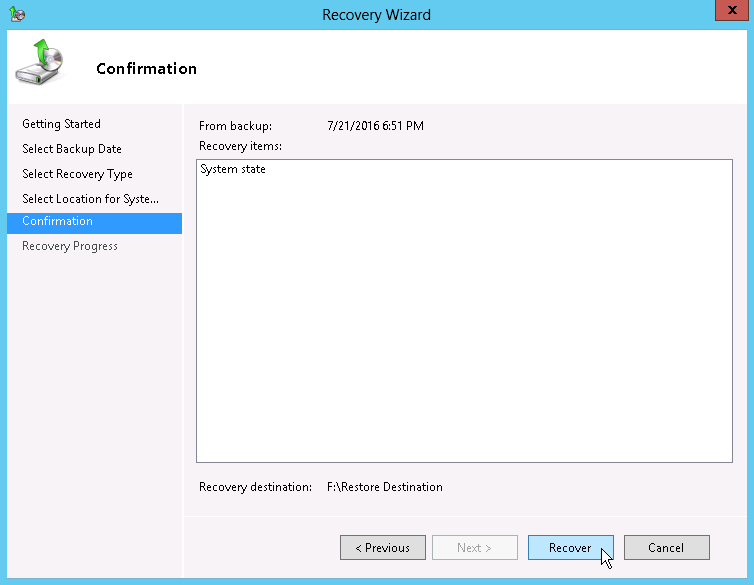
21. On the Recovery progress page, the status and result of the recovery operation is displayed.
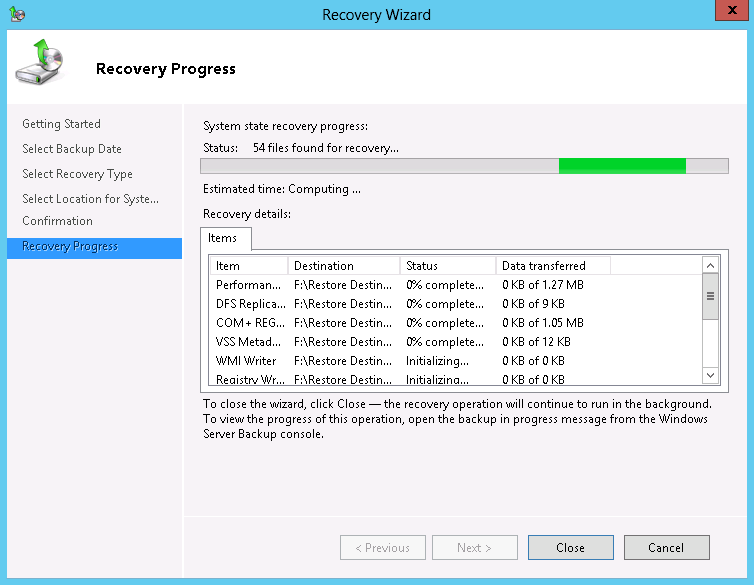
For restore to Original location, the system state recovery cannot be stopped once it is started, or the system could become unbootable.

